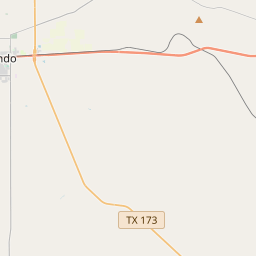Vance Hotel and Store
Historical marker location:





Constructed in 1849 with local limestone, mortar and cypress lumber, this building includes elements of Alsatian domestic architecture found in Castroville. The 18-inch-thick walls were originally coated with a whitewashed lime plaster, while split cypress shingles covered the gabled roof. It was first a house, store, and post office for Swiss merchant Caesar Monod. By the 1860s, John and Rowena Vance added a wing for the store and a second story for guest rooms. The Vance Hotel, with a nearby bath house and kitchen, gave comfort to travelers on the Eagle Pass - San Antonio Road. Recorded Texas Historic Landmark - 1965
As one of the most visible programs of the Texas Historical Commission (THC), historical markers commemorate diverse topics in Texas history, including: the history and architecture of houses, commercial and public buildings, religious congregations, and military sites; events that changed the course of local and state history; and individuals who have made lasting contributions to the state, community organizations, and businesses.
Texas has been a major oil-producing state for over a century. The first big oil discovery in Texas was the Spindletop field near Beaumont in 1901, which set off a massive oil boom that transformed the state's economy and made Texas one of the wealthiest states in the country.
In the 17th century, Spanish explorers arrived in the region, claiming the land for Spain. The Spanish established missions in the area to convert the Native Americans to Christianity and to further their control over the territory. One of the most notable missions was Mission San Francisco de la Espada, which still stands today and is a popular tourist attraction.
During the 19th century, the area that is now Medina County became a part of the Republic of Texas after it gained independence from Mexico. As more settlers moved into the area, the town of Castroville was founded in 1844 by colonists led by Henri Castro. The town became a major hub for German immigrants, and their influence can still be seen today in the town's architecture and cultural heritage.
Over the years, Medina County has experienced significant economic growth and development. The discovery of oil in the early 20th century led to an oil boom in the area, and agriculture has also played a significant role in the county's economy, with cattle ranching and crop farming being major industries.
Today, Medina County is a thriving community that celebrates its rich history and diverse cultural heritage. Visitors can explore the area's historical sites, such as the missions and historic downtown areas, while also enjoying the natural beauty of the surrounding countryside.
Medina County Timeline
This timeline provides a concise overview of the key events in the history of Medina County, Texas.
- 1841 - Medina County is established as a county in the Republic of Texas.
- 1842 - Castroville, the county seat, is founded by Henri Castro.
- 1846 - Medina County becomes part of the United States after the annexation of Texas.
- 1850 - D'Hanis, another town within Medina County, is settled.
- 1856 - Hondo is founded and becomes the new county seat.
- 1861-1865 - During the Civil War, Medina County supports the Confederacy.
- 1881 - The International-Great Northern Railroad is completed, boosting economic development.
- 1917-1918 - Many Medina County residents serve in World War I.
- 1920s-1930s - The Great Depression causes economic hardship in the county.
- 1942-1945 - World War II leads to changes in the local economy and military service.
- 1953 - Medina Lake is created with the construction of Medina Dam.
- 1998 - The historic Medina County Courthouse is restored after a fire severely damages it.